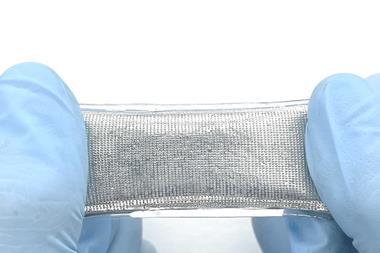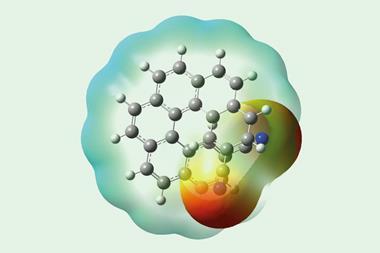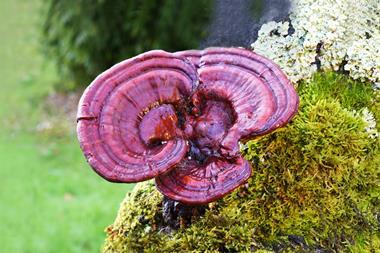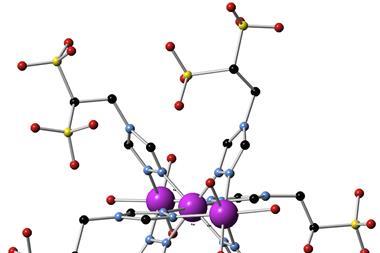Scientists in the US have successfully synthesised crystallised polyaniline nanowires using tetraaniline seed crystals. This is the first time that pure crystals of conjugated polymers with independently tuneable crystalline and chemical properties have been prepared, thus overcoming a major challenge in organic electronics.
The ability to modify the chemical structures of conjugated polymers to obtain desirable properties for lightweight and flexible devices is central to the field of organic electronics. However, the conductivity of organic materials is lower than conventional inorganic semiconductors such as silicon and gallium arsenide.

Although improving polymer crystallinity could increase conductivity, conjugated polymers are difficult to crystallise due to unfavourable free energy considerations. Current methods to prepare crystallised conjugated polymers result in either impure crystals, semicrystalline structures or aren’t scalable.
‘The idea to use a seed crystal came from the parallel inorganic materials field,’ says Yue Wang at the University of California, Merced, who led the study. It’s standard practice in the semiconductor industry to grow large wafers from silicon seed crystals. ‘We hypothesised that if we could get a high-quality seed crystal, it is very likely we could grow polymer crystals as well. However, the challenge for the organic electronics field is that it is not easy to grow a polymer seed crystal.’
The researchers got around this problem by using small sections of the polymer – in this case, an oligomer with four repeating units – that could be more readily crystallised than the whole polymer, as the seed crystal. On mixing the oligomer seed crystal with the polymer, the polymer chains arranged themselves in a similar manner as the seed crystals, thus forming crystallised polymer nanowires. The resultant crystal is also compositionally pure since the seed crystal is composed of the same building blocks as the polymer.
Describing the self-assembly method, Wang says ‘we mix the oligomer and polymer at room temperature, and essentially it is like growing flowers. You put the seed in and give it the right conditions and the material grows by itself to the desired form, without requiring any complicated steps.’
Oligomer induced crystallisation of the parent polymer could potentially be applied to other conjugated polymers and even improve the crystallinity of polymer thin films, ‘since we should be able to make an oligomer seed crystal from most conjugated polymers,’ concludes Wang.
The study ‘presents a universal solution to conducting polymer nanostructure formation. It is definitely a translational technology that can be applied to any oxidative radical polymerisation that can take place in solution,’ comments Julio D’Arcy, an expert on conjugated polymers at Clark University in the US. It ‘opens the door to new families of crystals of conducting polymers and I expect these will be exciting materials for electronic applications.’












No comments yet